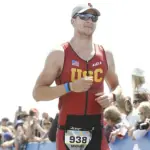- Events
- Calculators
- Running
- Triathlon
Cycling Events
Triathlon Articles
- Fitness
- Sports
Outdoor Events
- Nutrition
Nutrition Articles
Health & Injury Articles
- Kids & Family
10 Cycling Habits You Need to Stop Immediately

Written by
Michael Nystrom
While you may notice it in others when out on the road, you've likely unknowingly picked up some bad habits yourself. It happens. Cycling is a repetitive sport, which means you might pick up some less-than-perfect techniques over time. From bouncing up and down on the saddle to seriously neglecting your bike, we've gathered 10 cycling no-nos, as well as solutions on how to stop these preventable habits immediately.
Pedaling in Squares
1 of 11
We ride with clipless pedals for a reason. If you're not taking advantage of the full pedal motion, you're missing out on a more efficient riding style. Your pedal stroke should be a seamless circle-like action, with your foot pulling through the bottom of the stroke and back up and over. Having a tough time visualizing this? Try cycling with only one foot clipped in—it will force your leg to engage all the way around the revolution.
Find:
Cycling EventsImproper Nutrition
1 of 11
When it comes to on-the-bike nutrition, it's important to stick to what you know. If Swedish Fish and Honey Stinger waffles work for you, don't throw a Coke and a Gu into the mix when out on a long ride. Nothing will shut your body down faster than being asked to perform at a high level with an upset digestive system. Experiment with nutrition on shorter training rides and only change one variable at a time.
Too Much Grinding
1 of 11
For some, riding at a low cadence in the big ring feels smoother and more efficient than others. It has its benefits, but spending too much time in the big ring can put added stress on your muscles and tendons due to the increase in torque. A good way to combat this is by purchasing a cadence sensor and keeping your cadence between 80 and 100 RPM. Of course, preferences vary based on the individual, but developing a higher cadence is a great way to improve the efficiency of your pedal stroke and develop a faster response when you need a quick burst of speed.
Skipping Climbs
1 of 11
Especially for bigger cyclists, hills can be the bane of our existence. Unfortunately, there's no way around it. If you want to get faster, you have to put in the work. Ditch the flat bike path from time to time and head for the hills. You don't have to schedule a 20-mile climb on a weekly basis—start small (15- to 30-minute efforts) and work your way up (see what we did there?). Climbing isn't so bad, we promise!
Elbows Out
1 of 11
While a fast, sweeping decent may give you the feeling of flying, don't be the cyclist who rides propped up with his or her elbows out like a set of wings. Not only is it not a very efficient riding position, it just looks terribly awkward. According to a paper from the Institution of Mechanical Engineers, gripping the brake hoods while keeping the forearms horizontal resulted in a 13.4-percent reduction in required power compared to the reference posture. #science
Find:
Cycling EventsBobbing Up and Down
1 of 11
It's likely you're not even aware you're doing it, but bobbing up and down is an easy habit to break. Regularly including core work into your training regimen can help keep your upper body stable and less prone to excessive movement. Also, slightly lowering your saddle height can also help reduce upper body movement. Head to your local bike shop to get a proper fit if you haven't done so already.
Find:
Cycling EventsNot Taking a Pull
1 of 11
If you're just getting used to riding in a group, nobody is expecting you to take a pull. But if you're familiar with the other cyclists and are at a similar fitness level, it's proper etiquette to take a pull at the front from time to time. Gauge how long others are pulling for and mirror accordingly. When you're done, casually flick your elbow and peel off to signal it's time for the cyclist behind you to take his or her turn.
Find:
Cycling EventsNot Maintaining Your Gear
1 of 11
With so many moving parts, it's important to give your bike a proper look over from time to time. Make sure all the bolts are snug, lube the chain, check your quick releases, swap out old tires, etc. It's better to take a preventative approach than have something fail when you're miles from home with no cell service. Plus, regularly maintaining your bike will make it last longer.
Too Much Volume
1 of 11
Rest days aren't for the weak. Your body needs adequate time to recover and rebuild after multiple hard efforts on the bike. This may sound blasphemous to the hardcore cyclists out there, but throw in a swim or a weight-training session to give your legs time to recover and fix any muscular imbalances you may be developing. Also, don't skimp on shuteye—if your energy levels are low, opt for an easy training day and go to bed earlier.
Breaking Traffic Laws
1 of 11
We're sure you already know this, but stop signs and traffic lights are not optional for cyclists. Not only is rolling through either against the law, it's also extremely dangerous. Your 16-pound carbon bike is no match for a 2,000-pound car. Don't be the guy or girl who gives cyclists the bad reputation amongst motorist by not following the rules of the road.
Find:
Cycling EventsAbout the Author

More Articles by Michael »Michael Nystrom

